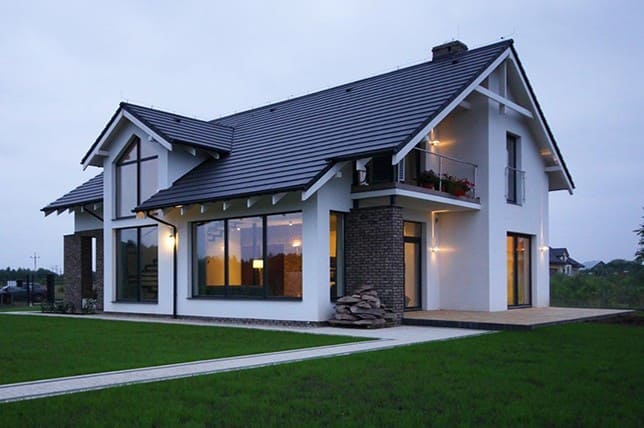Introduction
When considering the design of a home, the roof is often one of the most critical aspects. It not only affects the home’s appearance but also plays a vital role in its structural integrity and energy efficiency. Roof styles have evolved over centuries, influenced by architectural trends, climate, and technological advancements. This article aims to provide a comprehensive guide to different home roof types, helping homeowners, builders, and architects choose the best style for their needs.
Gable Roof
The gable roof is one of the most common and recognizable roof styles. It features two sloping sides that meet at a ridge, forming a triangular shape. This design is popular for its simplicity and effectiveness in shedding water and snow.
Features:
- Simple triangular shape
- Excellent water and snow runoff
- Can accommodate various types of roofing materials
Benefits:
- Cost-effective and easy to construct
- Provides good ventilation and attic space
- Suitable for most climates
Drawbacks:
- Can be susceptible to wind damage in areas with high winds
- Limited architectural appeal compared to more complex designs
Hip Roof
A hip roof has slopes on all four sides that converge at a single point, creating a more stable and wind-resistant structure compared to a gable roof. This design is often seen in regions prone to high winds and heavy snowfall.
Features:
- Four sloping sides
- Self-bracing structure
- Can be combined with other roof styles for a complex appearance
Benefits:
- Excellent stability and wind resistance
- Efficient water and snow runoff
- Offers more living space under the roof
Drawbacks:
- More complex and expensive to build than gable roofs
- Less attic space due to the inward slope of all sides
Flat Roof
Flat roofs are commonly found in modern and commercial architecture. Despite the name, they have a slight pitch to allow for water drainage. Flat roofs offer a unique look and can be utilized as additional living space or for installing solar panels.
Features:
- Minimal slope for water drainage
- Can be used for additional outdoor living space
- Often constructed with materials like asphalt, rubber, or PVC
Benefits:
- Easier and safer to construct and maintain
- Ideal for installing solar panels or creating rooftop gardens
- Provides a modern and sleek aesthetic
Drawbacks:
- Poor drainage can lead to leaks and water damage if not properly maintained
- Not suitable for areas with heavy snowfall
Mansard Roof
The Mansard roof, also known as a French roof, features four sides, each with two slopes. The lower slope is steeper than the upper slope, creating additional living or storage space under the roof. This style is often associated with French architecture and adds a touch of elegance to any home.
Features:
- Dual-sloped on all four sides
- Creates extra living space, known as a garret or attic
- Often includes dormer windows
Benefits:
- Maximizes the usable space within the attic
- Aesthetic appeal and architectural interest
- Versatile design suitable for various home styles
Drawbacks:
- Complex design can be expensive to build and maintain
- May require more maintenance due to the multiple slopes and materials used
Gambrel Roof
The Gambrel roof, commonly seen on barns and Colonial-style homes, features two slopes on each side, similar to a Mansard roof, but only on two sides. The lower slope is steeper than the upper slope, providing ample attic space.
Features:
- Dual-sloped on two sides
- Steep lower slope with a gentle upper slope
- Often seen in traditional American architecture
Benefits:
- Provides significant attic space, suitable for storage or additional rooms
- Classic aesthetic appeal
- Efficient water and snow runoff
Drawbacks:
- Susceptible to wind damage
- Maintenance can be challenging due to the steep lower slope
Butterfly Roof
The butterfly roof is a modern design featuring two slopes that dip inward towards the center, resembling the wings of a butterfly. This style is often used in eco-friendly homes to collect rainwater for reuse.
Features:
- Inward-sloping design
- Central valley for water collection
- Modern and unique appearance
Benefits:
- Ideal for rainwater harvesting
- Provides ample natural light and ventilation
- Sleek, contemporary look
Drawbacks:
- Complex and expensive to construct
- Potential for water pooling if not designed correctly
Conclusion
Choosing the right roof style for your home is a critical decision that impacts not only the look of your home but also its functionality and longevity. Each roof style has its unique characteristics, benefits, and drawbacks, making it essential to consider factors such as climate, architectural style, and personal preferences. From the simplicity of the gable roof to the elegance of the Mansard roof and the modern appeal of the butterfly roof, there’s a style to suit every need and taste. By understanding these different roof styles, you can make an informed choice that enhances your home’s beauty, value, and performance.


